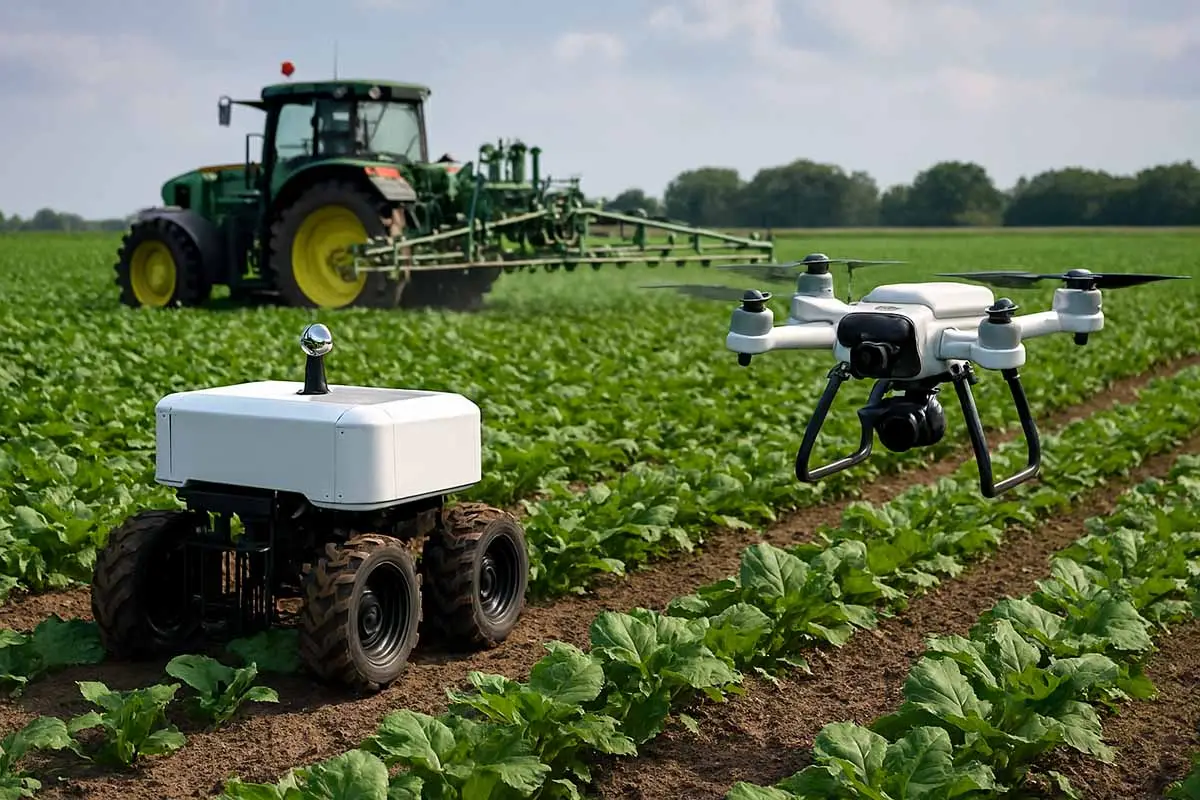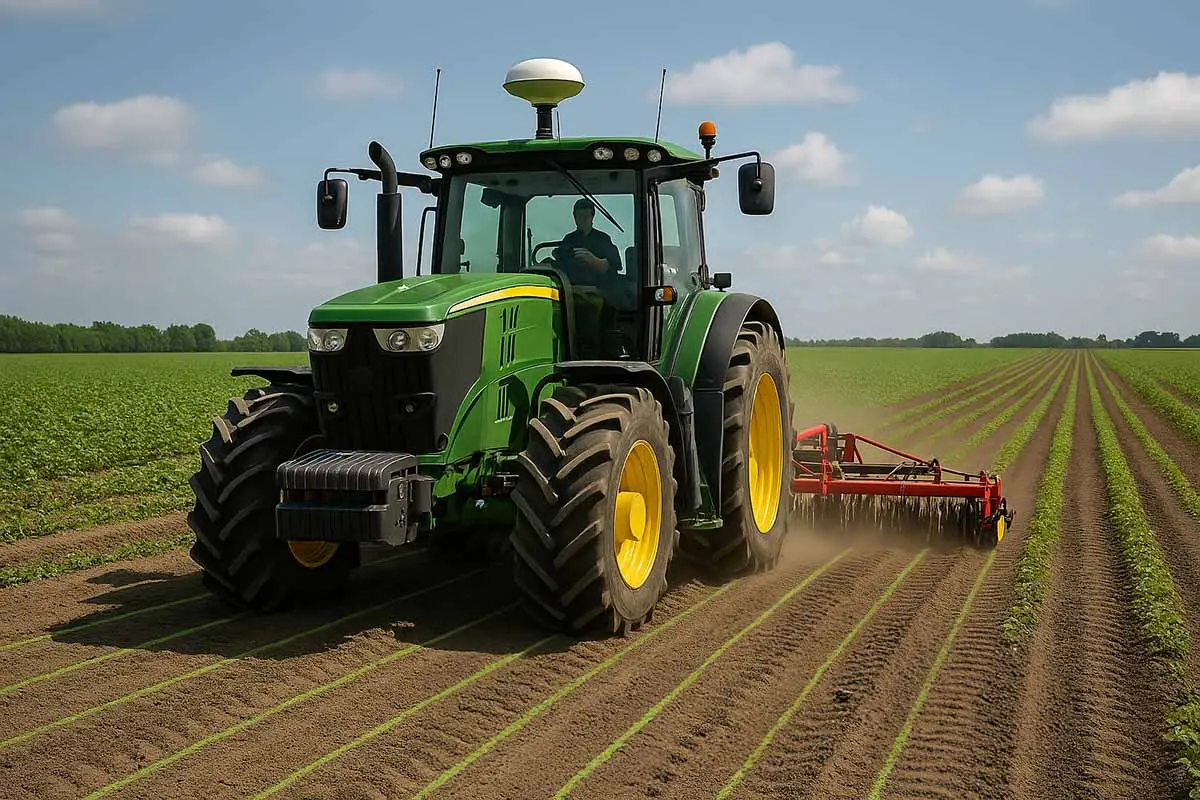Introduction
Farming has entered a new era, driven by cutting-edge technologies that are transforming traditional agricultural practices. Automation, artificial intelligence (AI), and robotics are reshaping how farmers grow crops, manage livestock, and optimize resources. These emerging trends promise not only increased productivity but also sustainability and precision in farming operations. In this article, we explore how these technologies are revolutionizing the agricultural landscape and what farmers and industry players need to know to stay ahead.
1. Automation in Modern Farming
Automation has long been a part of farming, from simple mechanical tools to complex machinery. Today, automation means much more, including:
- Autonomous Tractors and Machinery: GPS-guided tractors and harvesters operate with minimal human input, enabling precision planting, fertilizing, and harvesting.
- Automated Irrigation Systems: Sensors monitor soil moisture and weather to control irrigation automatically, conserving water and improving crop yields.
- Drone Technology: Agricultural drones survey fields for health, growth, and pest issues, gathering real-time data that informs farm management decisions.
2. Artificial Intelligence (AI) Applications
AI enhances data analysis and decision-making, providing farmers with actionable insights:
- Crop and Soil Monitoring: AI algorithms process satellite and sensor data to predict diseases, nutrient deficiencies, and irrigation needs.
- Yield Prediction: Machine learning models forecast crop yields by analyzing weather, soil, and historical data, helping farmers plan better.
- Supply Chain Optimization: AI improves logistics and demand forecasting, reducing waste and ensuring fresh produce reaches markets efficiently.
3. Robotics in Farming
Robotics brings precision and labor savings, tackling repetitive and labor-intensive tasks:
- Weeding Robots: Automated robots identify and remove weeds without chemicals, promoting eco-friendly farming.
- Harvesting Robots: Robots equipped with vision systems pick fruits and vegetables with speed and accuracy, addressing labor shortages.
- Livestock Monitoring Robots: Robots assist in feeding, health monitoring, and cleaning in livestock farms, improving animal welfare.
4. Benefits of Integrating These Technologies
- Increased Efficiency and Productivity: Automation and AI reduce manual labor and optimize resource use.
- Environmental Sustainability: Precision agriculture lowers chemical use and conserves water.
- Data-Driven Decisions: Farmers can make smarter choices backed by real-time insights.
- Labor Shortage Solutions: Robotics help fill gaps where human labor is scarce.
5. Challenges and Considerations
- High Initial Investment: Advanced machinery and AI systems require upfront costs.
- Technology Adoption: Farmers need training and support to integrate new tech successfully.
- Data Privacy and Security: Managing and protecting farm data is critical.
- Infrastructure Needs: Reliable connectivity and power are necessary for many solutions.
Further Read
- Industrial Tools in Agriculture – Powering Farming
- Overview of industrial tools for planting and harvesting
- Small vs Large-Scale Farm Tools: Real-World Case Studies
- Role of Mechanization in Sustainable Agriculture
- Top Agricultural Tool Brands You Should Know
- Emerging trends: automation, AI, and robotics in farming
- Top Industrial Tools Transforming Modern Agriculture
- Essential Maintenance Practices and Tools for Agricultural Machinery: Your Complete Guide
- IoT-Enabled Agricultural Tools
- Drones in agriculture: surveying, planting, and spraying
- Precision farming tools: GPS-guided equipment for planting and harvesting
- Data-driven decision-making in agriculture
- Top 10 Maintenance Tools for Tractors, Harvesters & Irrigation Systems
- Seasonal Maintenance Checklists & Toolkits for Farmers
- Hydraulic System Maintenance Tools for Heavy Farm Equipment
- Lubrication Tools and Best Practices for Agricultural Machinery
- Industrial Torque Wrenches: Key to Farm Equipment Safety
Conclusion
The future of farming is undeniably intertwined with automation, AI, and robotics. These technologies offer promising opportunities to boost productivity, sustainability, and resilience in agriculture. As the industry continues to evolve, embracing these trends will be key for farmers and businesses to thrive in an increasingly competitive and resource-conscious world.
Are you already using automation, AI, or robotics on your farm or in your business? Share your experiences and thoughts in the comments below! Don’t forget to share this article with fellow farmers and industry professionals.





